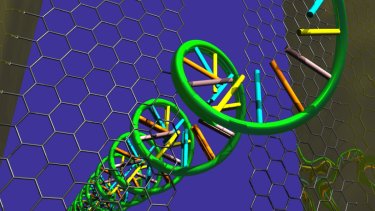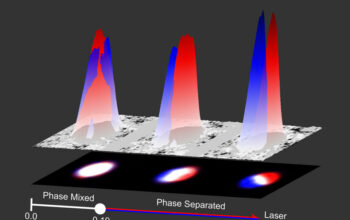Graphene, an allotrope of carbon arranged in a two-dimensional honeycomb lattice, has garnered unprecedented attention within the scientific community. Its remarkable electronic, thermal, and mechanical properties have catalyzed a myriad of applications across various fields, including electronics, materials science, and biomedicine. Among the burgeoning interests lies its potential to revolutionize genomic analysis and applications, a promising prospect that could accelerate the pace of growth in genomics.
The field of genomics, devoted to the study of genomes, encompasses the sequencing, mapping, and analysis of genetic material. The advent of high-throughput sequencing technologies has drastically increased the volume of data generated, leading to profound advancements in personalized medicine, genetics research, and biotechnology. Yet, the burgeoning demand for rapid, efficient, and cost-effective genomic analysis has illuminated the limitations of existing techniques. Herein, graphene emerges as a game-changing material capable of addressing these challenges.
One of the core competencies of graphene lies in its exceptional electrical conductivity. This property facilitates the development of highly sensitive and rapid biosensors, which can detect specific DNA sequences with a previously unattainable level of precision. By functionalizing graphene with specific biomolecules, researchers can create biosensing platforms that not only identify the presence of nucleic acids but also quantify their concentrations in real time. This innovation presents an opportunity to expedite genomic screening in clinical settings, enabling rapid diagnostics for infectious diseases, genetic disorders, and cancer.
Moreover, the high surface area-to-volume ratio of graphene elevates its efficacy in binding biomolecular targets. This feature is particularly advantageous for microfluidic devices, which integrate laboratory functions on a single chip. Graphene-based microfluidics could enhance the efficiency of genomics workflows, permitting simultaneous manipulation of multiple samples. Given that genomic analysis often involves complex procedures, such as amplification and sequencing, employing graphene-based systems could streamline these processes, thereby mitigating the time constraints typically associated with traditional methods.
In the context of sequencing, graphene holds promise in the advancement of nanopore sequencing technologies. Traditional sequencing techniques, while effective, are often hampered by lengthy procedures and substantial costs. The concept of nanopore sequencing, which involves the translocation of a single strand of DNA through a nanopore, has emerged as a powerful alternative. Graphene-based nanopores possess favorable characteristics, including tunable ionic currents and the capacity for single-molecule detection. This allows for real-time monitoring of nucleotide sequences as they pass through the pore. Implementing graphene in this capacity has the potential to significantly enhance the speed and accuracy of sequencing efforts.
Furthermore, graphene’s inherent biocompatibility complements its application in genomics. The development of nanocarriers for drug delivery and gene therapy—a burgeoning area in medical genomics—can benefit substantially from graphene’s non-toxic and biocompatible nature. Research is actively exploring the use of graphene oxide and reduced graphene oxide as carriers to deliver therapeutic agents that can interact with specific genetic targets. This ability to efficiently deliver genes or gene-editing components, such as CRISPR-Cas9, holds transformative potential in treating various genetic conditions and diseases, representing an intersection of genomics and therapeutic intervention.
The implications of graphene’s integration into genomic research extend beyond practical applications, casting a shadow over ethical considerations and societal impacts. As genomics increasingly correlates with health and identity, the accessibility and use of graphene-enabled technologies necessitate careful deliberation. Issues surrounding privacy, consent, and equity must be broached, particularly as genomic data continues to proliferate in both research and clinical realms. The challenges posed by data security will necessitate rigorous regulatory frameworks that protect individual rights while fostering innovation.
The research community must also remain cognizant of the sustainability of graphene production. Although graphene has emerged as a frontrunner in the materials science landscape, the environmental impact of its manufacturing processes warrants scrutiny. As genomic applications expand, it is paramount to ensure that the development of graphene technologies aligns with environmentally responsible practices. Striking a balance between innovation and ecological stewardship will be critical in attaining sustainable growth in both the fields of materials science and genomics.
In conclusion, the integration of graphene into the field of genomics represents a frontier brimming with potential. The material’s unique properties could catalyze a paradigm shift in genomic analysis, enhancing the speed, accuracy, and efficiency of sequencing and detection methodologies. With the convergence of nanotechnology and genomics, the possibilities for innovation are vast, heralding a new era in personalized medicine and therapeutic interventions. However, mindful consideration of ethical implications, regulatory frameworks, and sustainability practices must accompany this technological evolution. As research progresses, it is poised to illuminate pathways toward understanding and manipulating the building blocks of life with unparalleled capability.










